Chickens are not a bird of flight per say. They can get a little lift to escape the chicken run. They can also manage to get up in a tree to roost. Being able to roost in a tree isn’t necessary if your chickens sleep in a coop.
For the safety and well being of your feathered friends you may want to consider clipping their wings. Clipping the feathers on the chicken wing does not hurt them. Think of it as clipping your fingernails, they will grow back. You can even do this task by yourself, it is that easy.
I usually like to clip the wings of my new chickens so that they have to stay in the run and yard and not escape. This helps them to learn new boundaries.
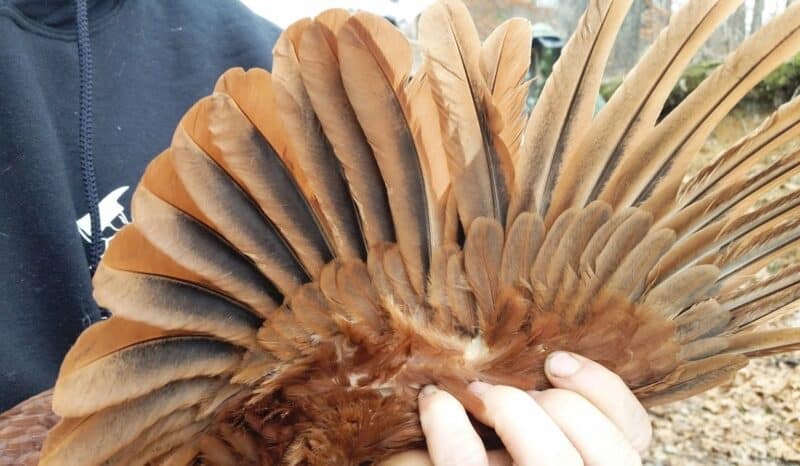
My chicken run is covered but I like to let them free range on nice days. I do not clip the wings on my chicks until their adult feathers are completely in. Roosters and hens alike can have their wings clipped.
The wing feathers will grow back in, especially after molting. You may want to reclip the chicken wing about six or so weeks after molting as they have grown back out. You will also want to check periodically as it just takes the clipped feathers to get to the right length to allow for flight.
Table of Contents:
Chicken Wing Feathers
There are several feathers to a chicken wing. Before clipping the wings you may want a little rundown of the feathers of the chicken wing. Each feather has a shaft that holds the feather into the skin.
The shaft is where you will inspect for blood before clipping. Where the blood supply lies in the shaft you will notice that it is a dark area and turns white as you go toward the tip of the feather.
This is the underside of the chicken wing.You can see the shaft running up the center of the feathers at this angle.
There are lesser coverts, median coverts, secondary coverts and primary coverts. The tertial feathers are the ones that grow on the side of the wing next to the chicken’s body.
The lesser coverts are the feathers that are from the tertials to the bend of the wing. Then from the end of the lesser coverts to the edge of the wing you have a small section called the alula. Finally, there are secondary and primary feathers.
Under the lesser coverts you have the median coverts and under them are the secondary coverts and then the secondary feathers at the ends. There are ten secondary feathers.
The feathers get longer as they move down the wing being the secondary feathers are the longest on that side. You do not need to clip the secondary feathers.
The primary feathers are the ones that you clip. There are ten primary feathers. The primary coverts are the feathers that are above the primaries. The primary feathers are the longest of the wing feathers.
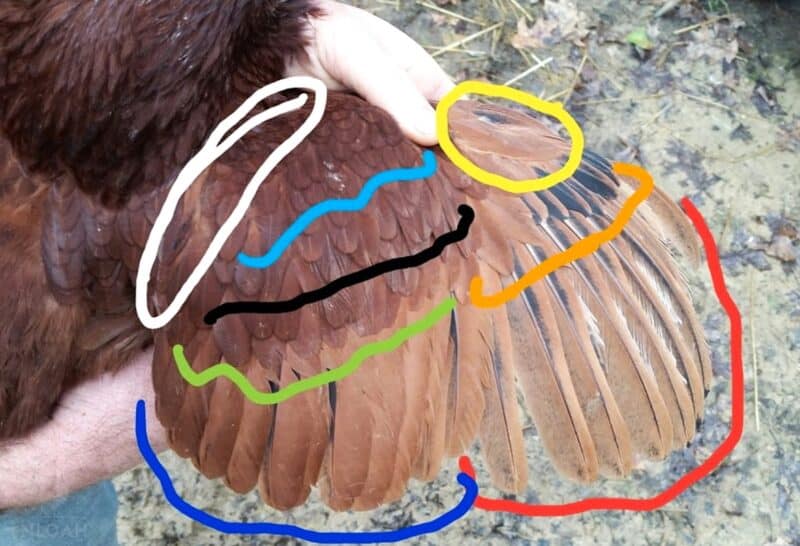
I have color coded the different feathers for easier identification:
- white = tertials,
- yellow = alula,
- light blue = lesser coverts,
- black= median coverts,
- green = secondary coverts,
- orange = primary coverts,
- dark blue = secondaries,
- and red = primaries.
The key to a successful wing clipping is to only clip one wing. If you clip both wings then the chicken can still fly.
You have to make the wings uneven so that the chicken is unbalanced and can’t fly high, it can still flap and jump down without harming itself. Cutting one wing will do the trick and keep the bird on the ground.
When to Clip a Chicken’s Wings
Although chickens begin fluttering their wings and testing out the skies at an early age, as soon as a few weeks old, you probably won’t need to do any clipping until the birds get their adult plumage until five weeks old or later.
Even after this point, you likely won’t need to do it a) until the feathers stop growing (until then they contain blood) and b) you notice a problem with your chickens flying.
You don’t need to start clipping until there’s an actual need for it, if that makes sense.
Before clipping, it is important to consider a few factors such as the breed and age of the bird and its environment.
After some time observing these factors, one will have enough knowledge about their flock and know when it’s okay to trim their feathers in order to promote safety without restraining them from activities like dust-bathing or perching up high.
Clipping a Chicken Wing Steps
Equipment
- Pair of scissors
Instructions
- Catch the chicken, sometimes easier said than done.
- Hold the chicken tight against you.
- Take one wing and spread out the feathers. I generally try to stick with the same side so I can quickly check if I got them all. This is not necessary but it makes my life a little easier.
- Inspect the primary feathers on the underside of the wing. You will notice the feather shaft is darker to a point, then it is white. The white part is safe to cut as there is no blood there.
- Take a pair of scissors, and clip the ten primary feathers back. I have actually used blunt tipped school scissors and they worked just fine.
- Turn the chicken loose, you are done.
This does not hurt the chickens, they are more bothered by being held than actually by clipping their feathers. I usually recruit my kids into chasing the chickens for me as they enjoy it and I can just clip and release.
When clipping you just need to take the feathers down some. There is no need to completely remove the primary feather exposing skin or bringing blood.
Do You Clip Both Wings on a Chicken?
You do not need to clip both wings on a chicken. By giving your backyard chickens longest feathers on just one side a good trim with a pair of sharp scissors, you’ll eliminate the primary flight feathers and make your bird imbalanced.
The imbalance is what makes it so difficult for your birds to fly. If they’re lopsided, it’s harder for them to take off.
You can clip both sets of feathers, if you want, but I’ve always found it to be more effective to just do one, especially if you’re working with heavier breeds in your flock, like Wyandotte chicken breeds or Orpingtons instead of bantam birds.
Molting Process
The feathers will grow back out, and will need clipping again. In the fall and winter months, chickens will lose their feathers; this is called molting. They will lose their feathers starting at the head and neck then down their back and across their breast and thighs and finally ending with the tail feathers.
The new feathers that grow back in are called pinfeathers and they will grow in the same order as the old ones were lost.
During the molting process you will notice that the hens aren’t really laying eggs either. During this time, the chickens need to reserve their nutrients and therefore still need to be fed a high quality feed. Molting occurs every year with chickens and so you will probably be clipping wings again when the feathers are done growing.
How necessary is it to clip their wings in the first place?
The biggest pro of clipping your chickens’ wings is that it keeps them safe from predators like hawks, owls, cats, dogs, and other animals who might want to harm them for whatever reason.
In addition, clipped wings can also help keep your birds from flying away into the wild where they may not be able to survive on their own.
Finally, clipping their wings will also keep your chickens from being able to jump over fences or other enclosures designed to keep them contained (saving you a lot of time, effort, and hassle as the chicken keeper).
That said, there are some disadvantages of clipping your chickens’ wings. One is that it can cause stress for some birds if not done properly. It is in no way painful as long as you do it correctly, but some flightier birds or those who are not used to being handled may find the experience stressful.
Some people feel that clipping the wings is unnecessary if they are already keeping their birds in an enclosed area such as a run or coop with high fencing around it. That’s probably true, but it’s also worth noting that it’s not always a great idea to clip the wings of free range chickens, in some cases, either.
Yes, it will make it harder for them to get away from you and roost up in trees. However, it will also make it harder for them to get away from predators, which can be detrimental as well.
Finally, while clipping the primary feathers will limit flight ability, some breeds are still capable of gliding short distances even without clipped primaries – meaning they could still escape over a high fence or into danger if not monitored closely enough.
Of course, your chickens’ wing feathers will ultimately grow back, so clipping wings is by no means a permanent solution. You’ll need to repeat this every few months (after molting, at least) for it to be fully effective.
How High Can a Chicken Fly With Clipped Wings vs. Unclipped?
With unclipped wings, a chicken can (un-surprisingly) reach quite high! While chickens primarily use their wings for short and brief flights to gain balance or reach an elevated surface, they are capable of soaring up to 10 to 20 feet in the air when needed!
Ultimately, it depends on the breed of chicken, its size, how short you cut the wing feathers, and a myriad of other factors.
All livestock requires some amount of care, and clipping chicken wings is one of the easier tasks there are to conquer. Good luck and happy wing clipping of your feathered friends.
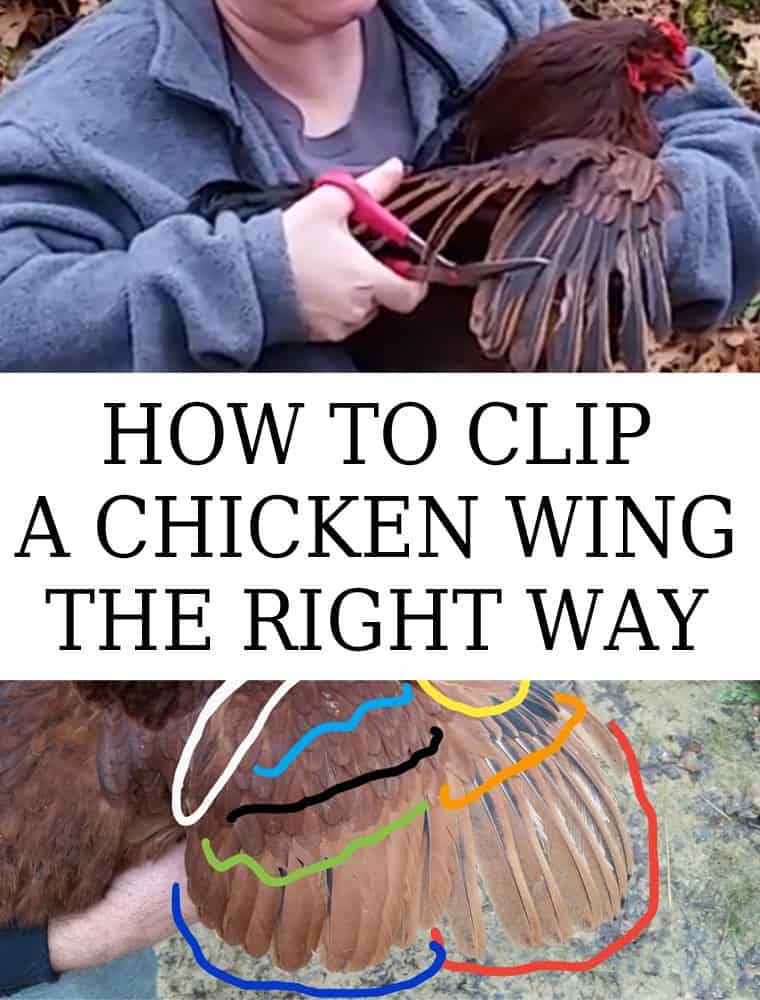
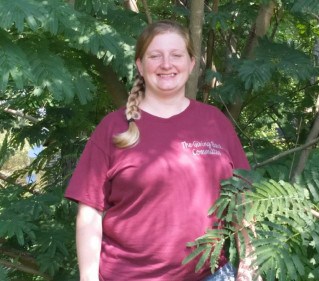
Sarah Rodriguez is a homesteading wife and mother of five living in Appalachia. She grew up in a homesteading and logging family.
She and her husband Arnie work their 10-acre homestead together alongside their growing family. Sarah honed her self-reliance skills through 4-H and FFA at an early age and is now teaching her children to live off the land, raise livestock, and the importance of both sustainability and frugality.

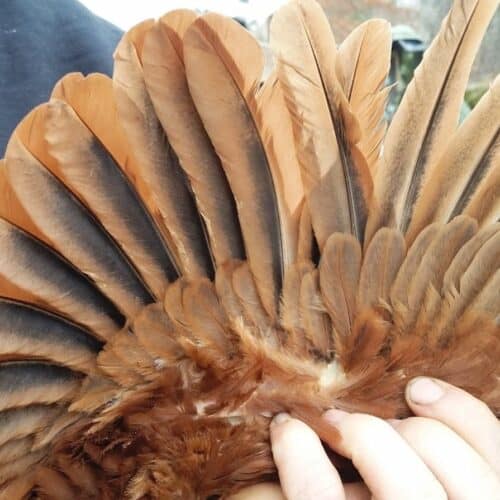
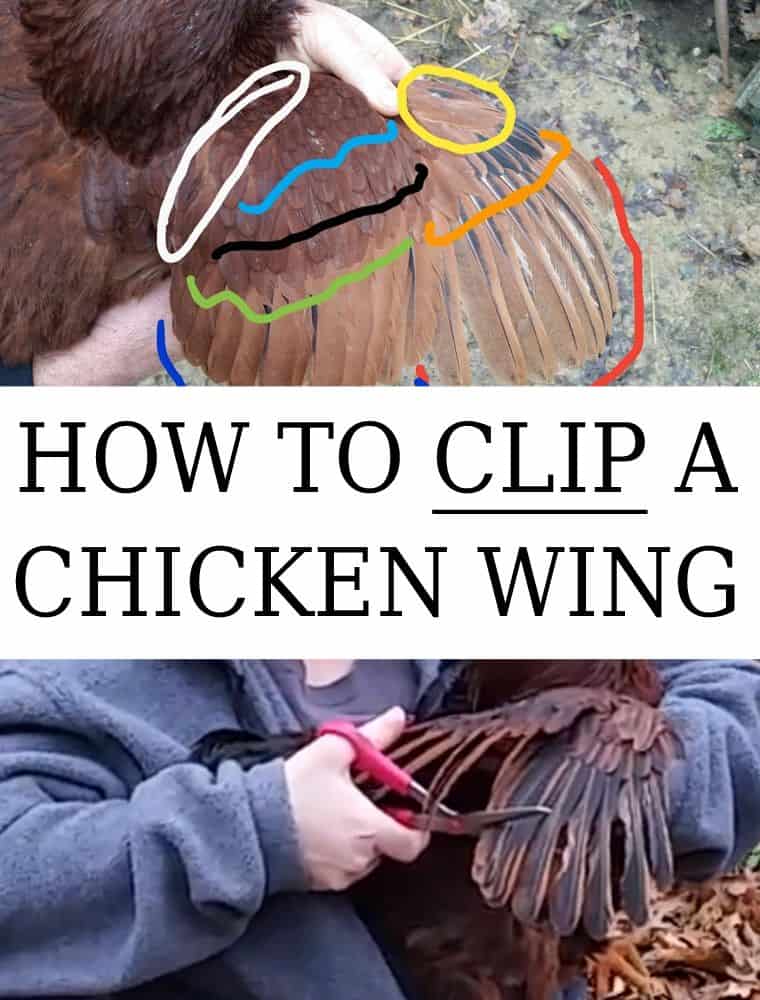
I feel there is no need to chase them as this usually leaves them more traumatized and frightened of me in the long run. I catch them up off the roost when they go into the coop at night. There are lights in the outer part of the coop/shed and a bench there also I use a good headlamp. Less work for me and less trauma for them.